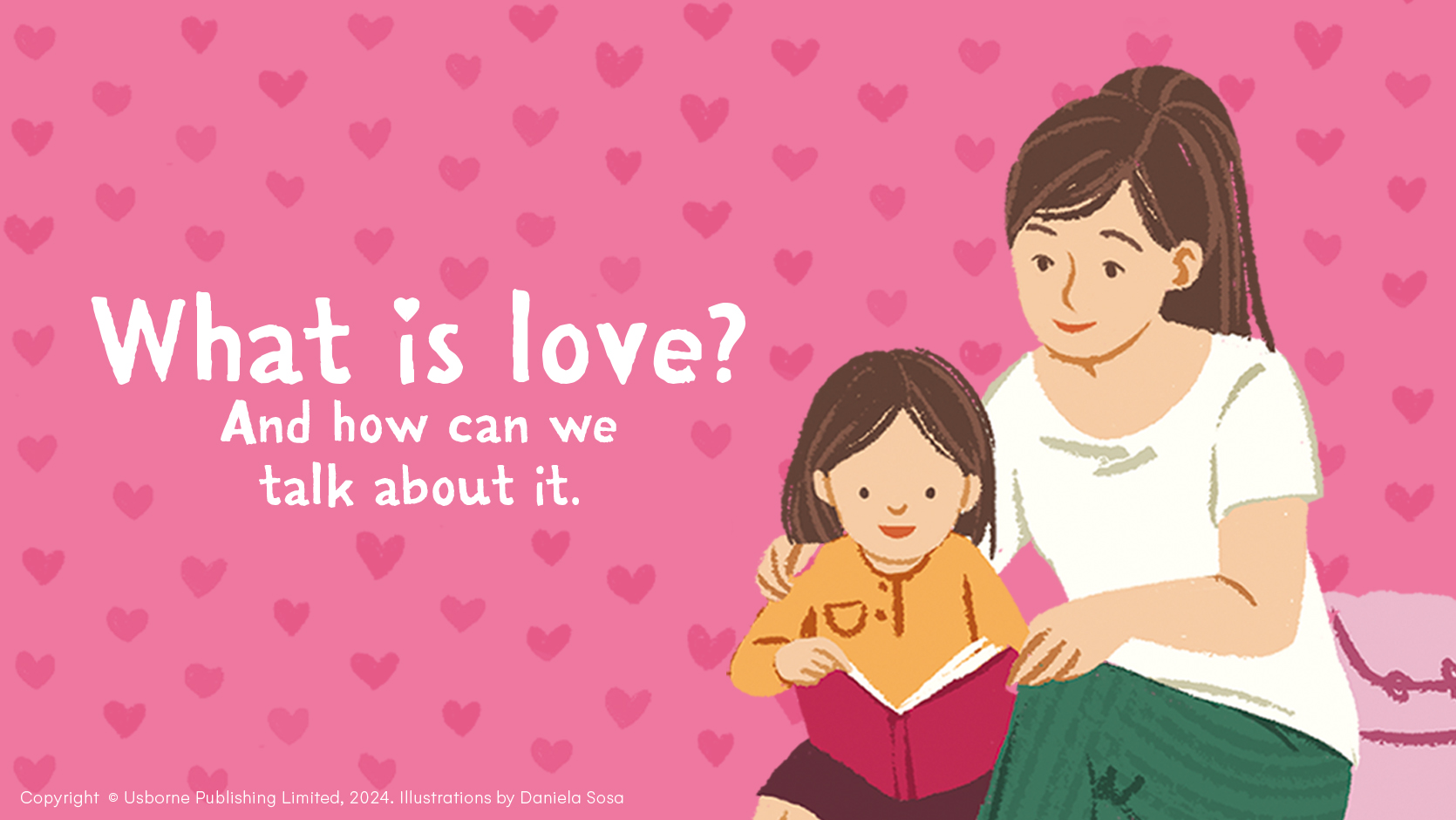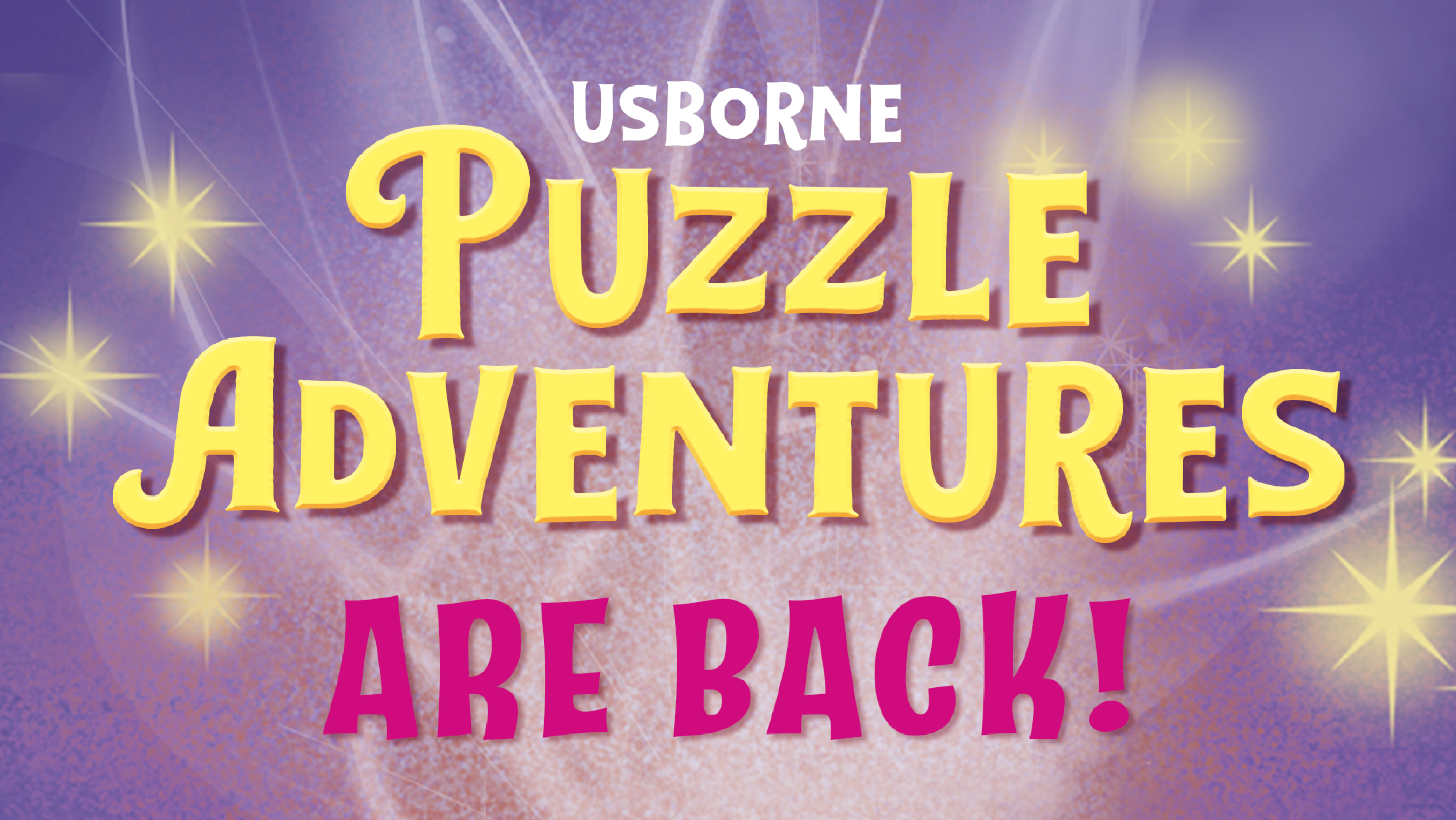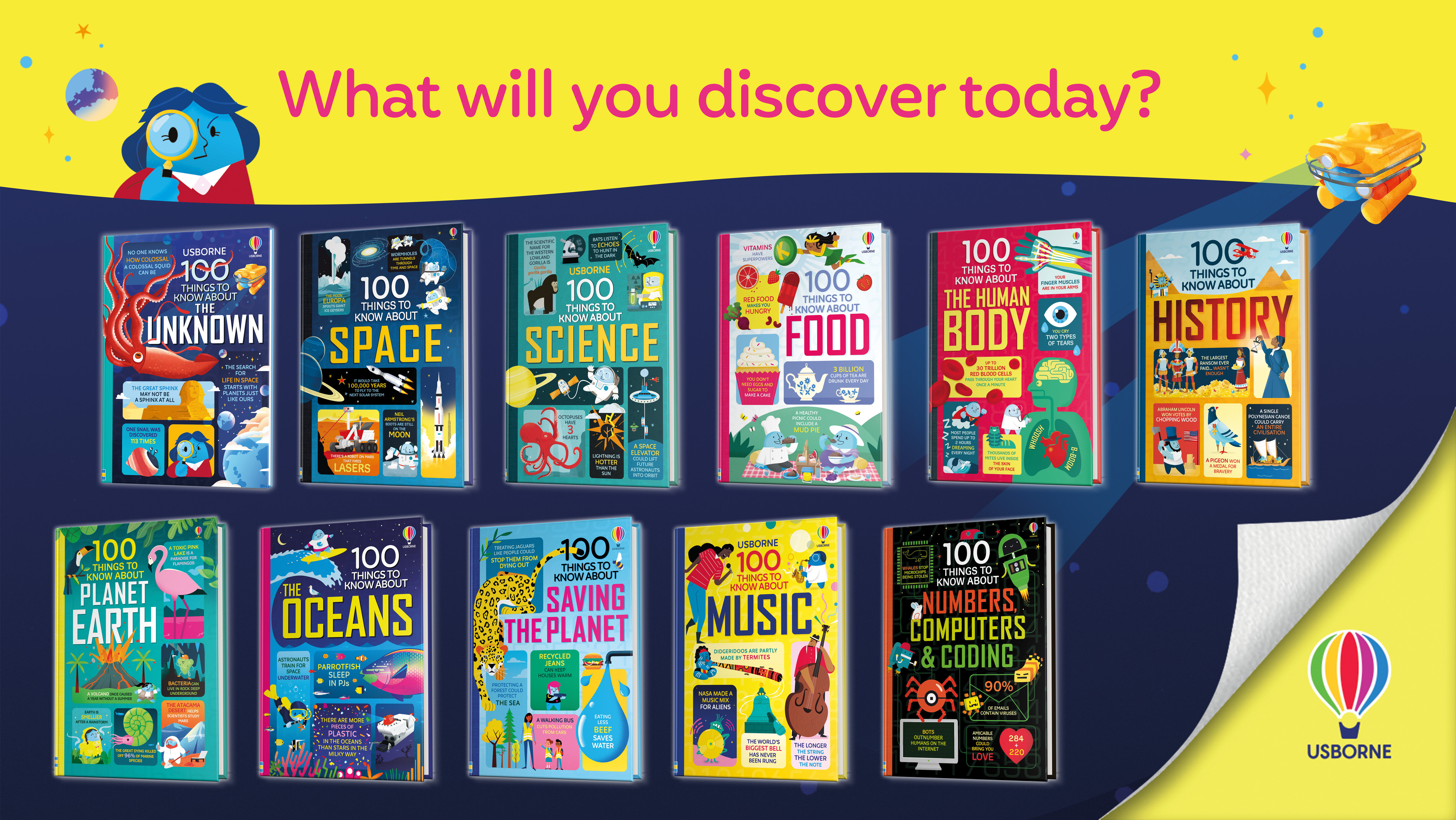- Behind the scenes at Usborne
Why I wrote All about Families
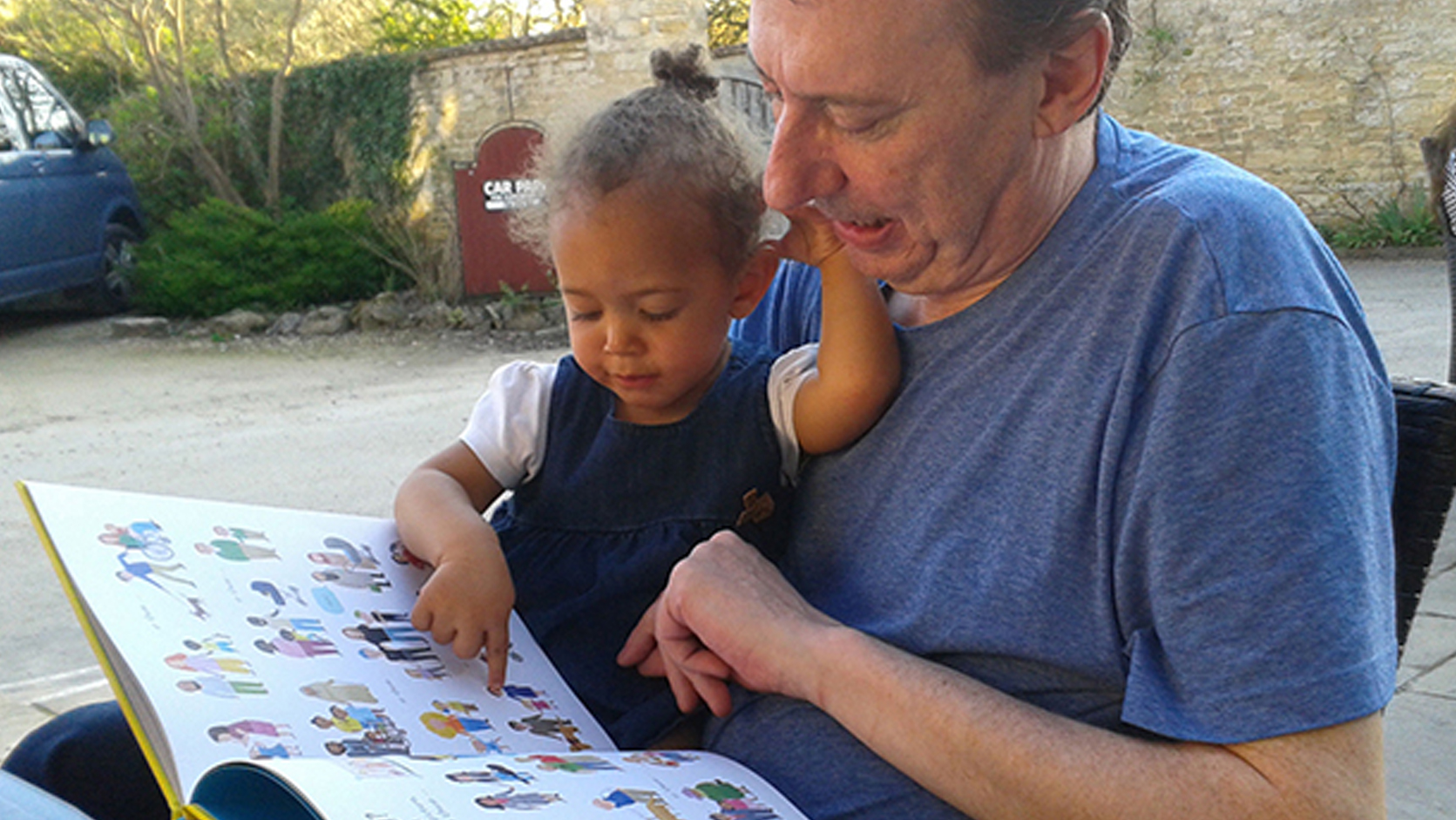
Felicity Brooks, author of All about Families, explains why it is important to showcase families in all their shapes and sizes.
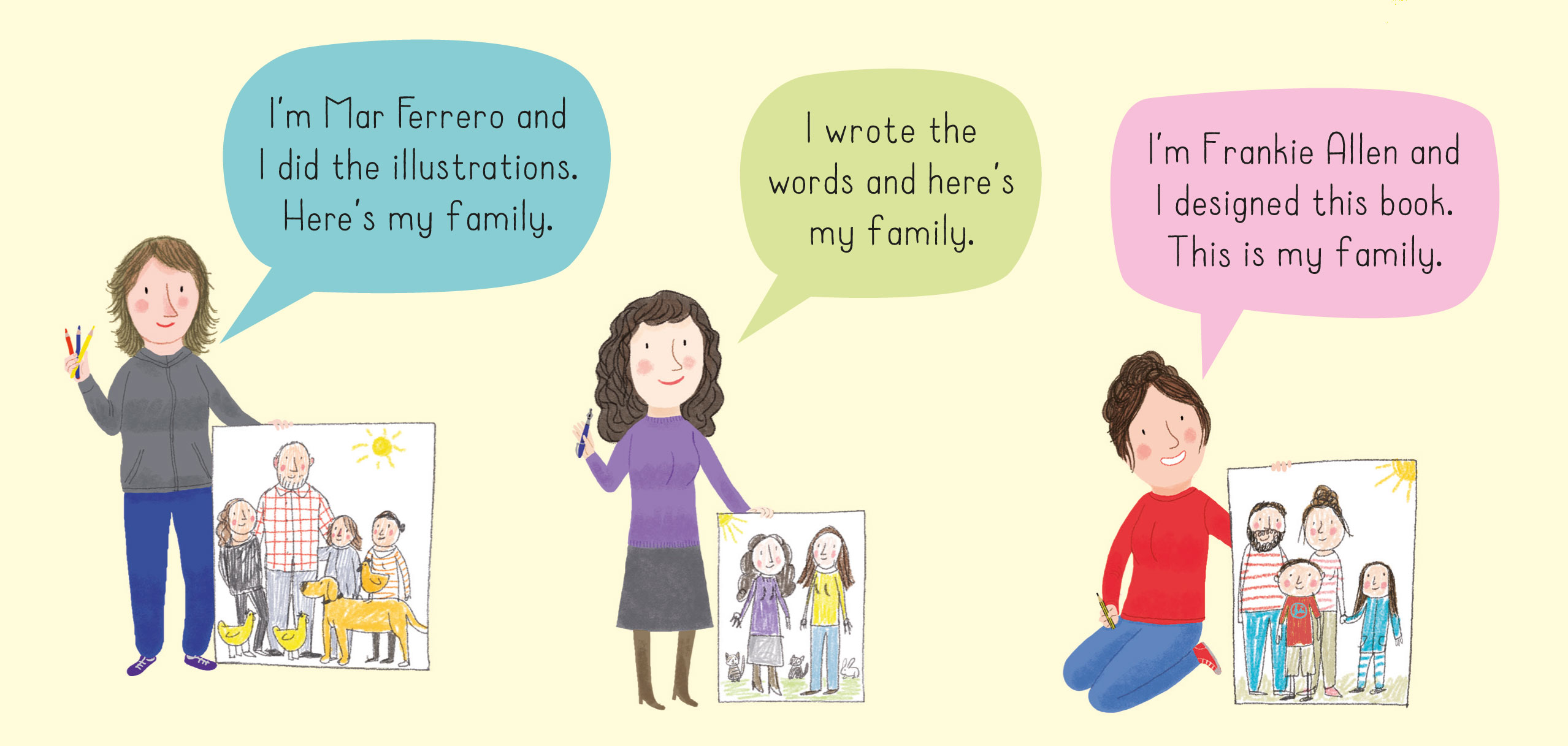
The team behind All about Families
Clearing out our old family home last summer and looking at all the books, faded photos, letters, postcards, certificates and other memorabilia collected over the years started me thinking about how little was actually explained to me about families when I was a child.
It was a time of ‘family secrets’, when divorce was still stigmatised; adopted, fostered and bereaved children somehow just had to ‘fit in’ at school without talking about their feelings and experiences, and single, mixed race, unmarried, and same-sex parents were seen as extraordinary (if they were seen at all), and rarely or never represented in children’s books.
Thankfully, so much has now changed and I see the much greater acceptance of family diversity alongside legislative changes as real causes for celebration.
There are now 14 million families with children in the UK and if present trends continue, nearly half of the children born today will see their families break up and reconfigure in some way by the time they are 15.
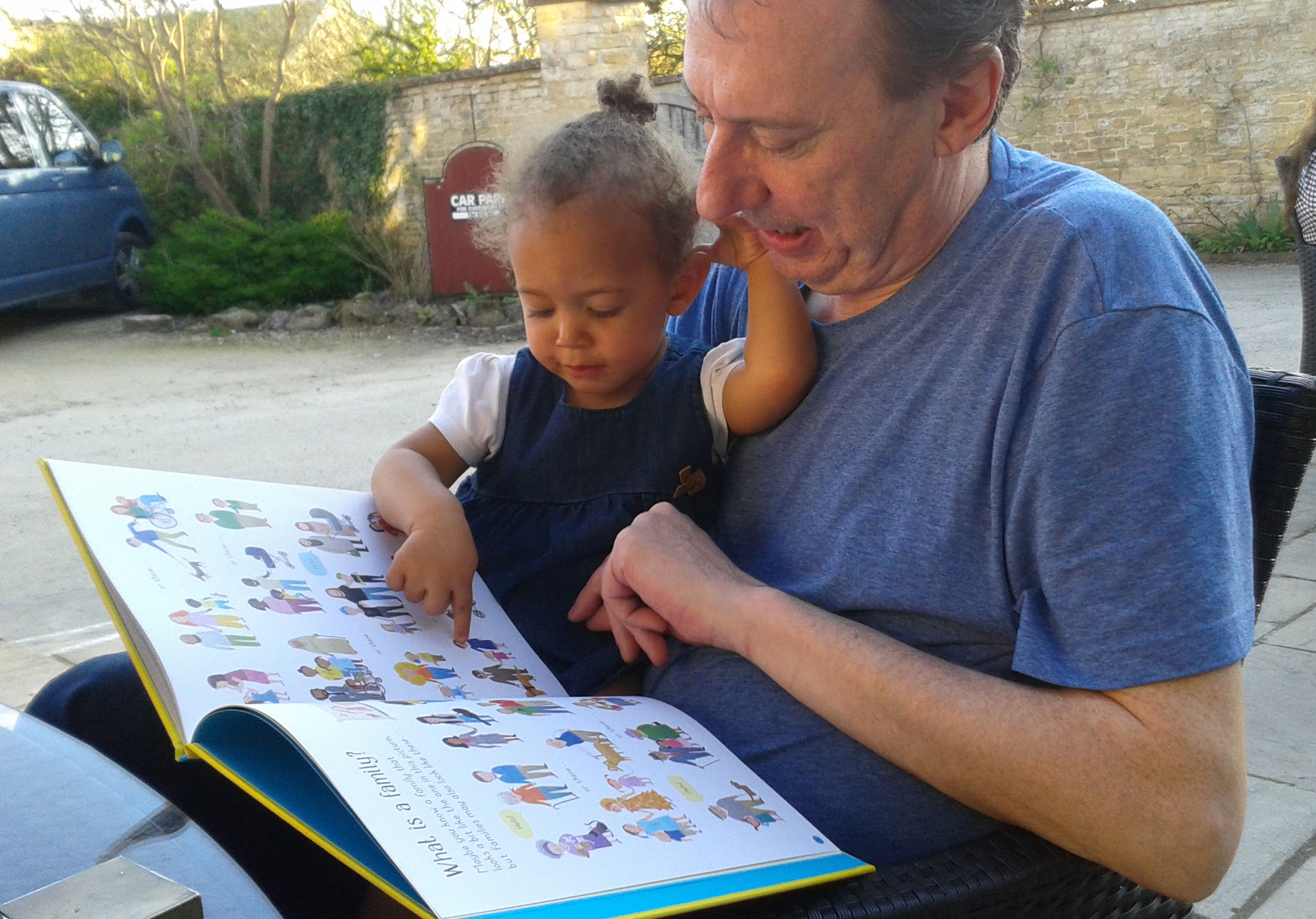
Great-uncle Clive reading All about Families with his great-niece Lauryn
With this in mind, and as a single-parent myself, I set out to write a book which not only represents but celebrates the many different kinds of families that exist and will exist: the lone parent, cross-generational, patchwork, adoptive, foster and blended families; the cohabiting, married, divorced, separated, widowed, remarried, mixed race, multilingual and same-sex parents; the step families, the half-siblings; the parents, grandparents and children with special needs and different abilities… the list could go on!
Another area I wanted to explore was based on the requirement for children at the Early Years Foundation Stage to ‘know about the similarities and differences between themselves and others and among families, communities and traditions.’
I tackled this in the book through themes such as family food, language, celebrations, festivals, feelings and homes. Mar Ferrero’s delightful illustrations brilliantly portray the rich variety of family life in different cultures and all the things different families do together.
The book also looks at how families can change and evolve, for example when a new baby arrives, when parents break up, meet new partners, or when there is a death in the family.
Young readers can discover how families look after, support and help each other through such big changes and challenges, as well as through the ups and downs of everyday life. There are questions and activities throughout which prompt children to think, draw, write and talk about their own and other families.
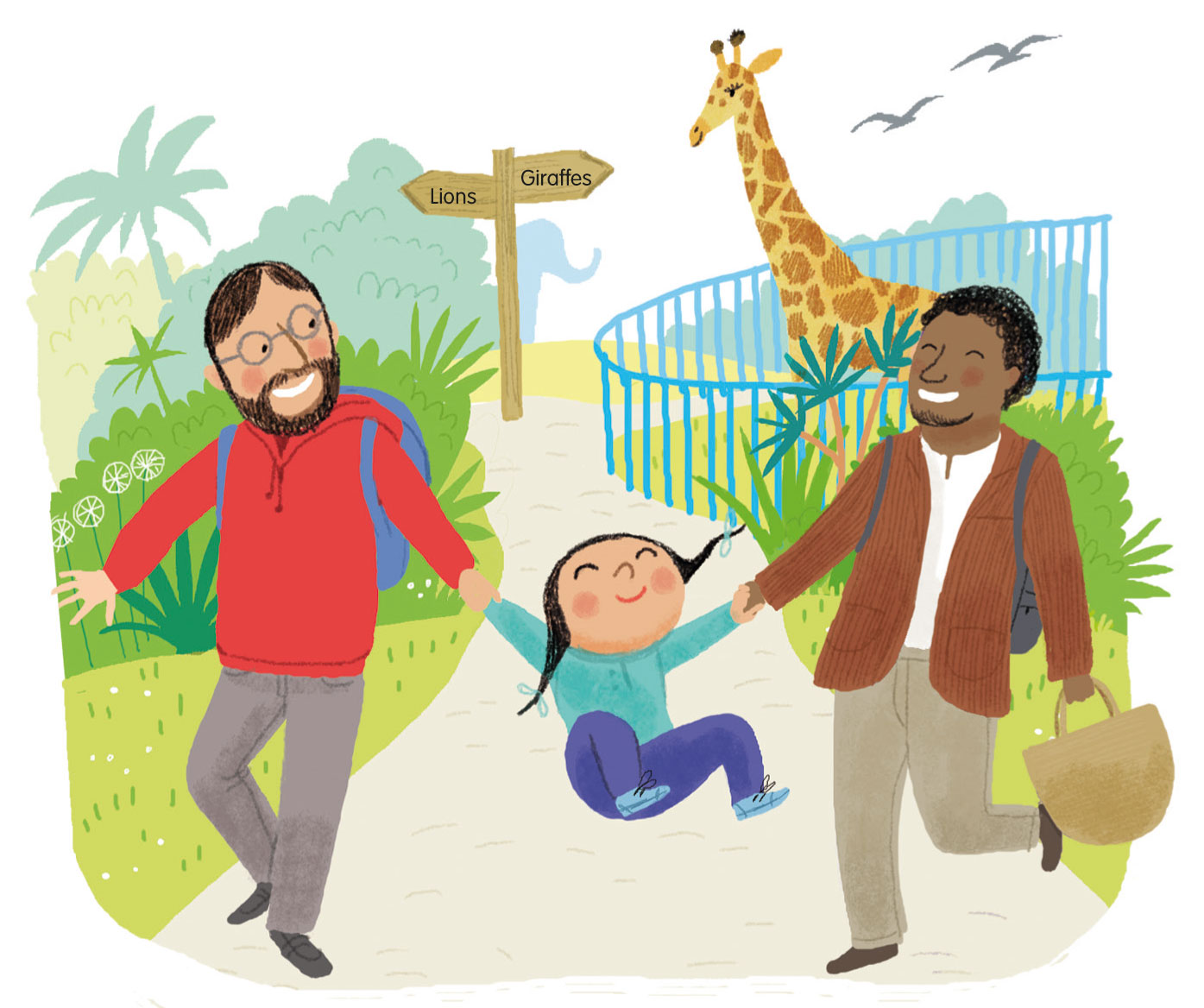
Illustration by Mar Ferrero
Something that confused me when I was young was that there were so many different and mysterious names for relatives. (Since nearly every adult woman we knew was ‘auntie’ whether she was related to us or not, it’s no wonder I was confused!)
So I included an annotated family tree in the book, which allows children to find out about the names for relatives and how Step-grandmother Maria is related to Cousin Theo. I also added a list of ‘family words’ at the back of the book, which explains all those strange and complicated terms such as ‘in-law’, ‘half-sister’ and ‘sibling’ as well as ‘auntie’, ‘cousin’ and ‘nephew’.
I suppose the dominant theme of the book is that every single family of whatever shape and size is unique but also ‘normal’ and that family love and family life with all its ups and downs, challenges and changes should be celebrated.



